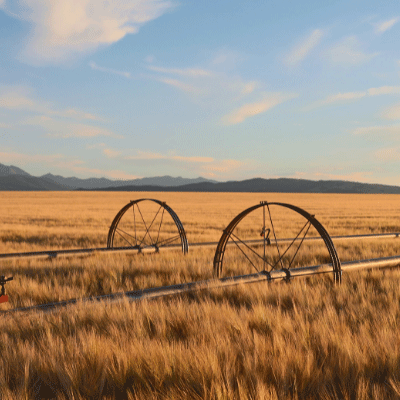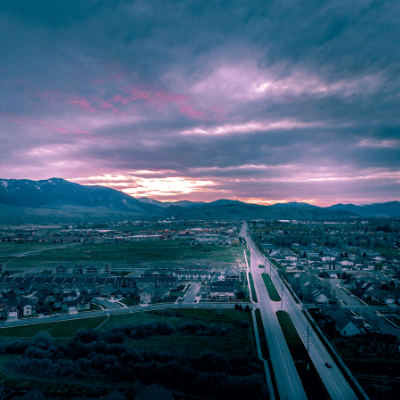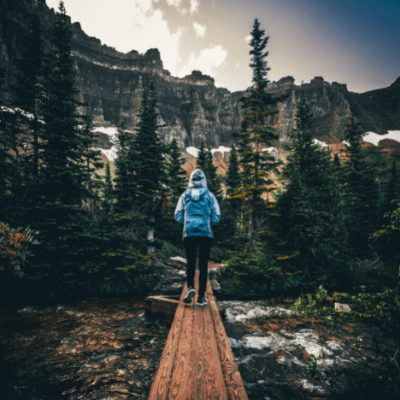Moving to Montana Guide: Discover the Big Sky Country
We created this guide for moving to Montana to help those who are in their very early stages of researching where they’d like to move. So, what exactly do you need to know before moving to Montana? We’ve complied some of the most important items you should consider when making this big decision. According to 2020 Census data, Montana was in the top fifteen fastest growing states of the last decade, with a massive 9.6% growth in population. So, is Montana the right state for you to move?
What You Need to Know about Montana’s Geography

Montana is a Mountain West state bordered by Idaho to the west, North and South Dakota to the east, Wyoming to the south, and by the Canadian provinces of Alberta, British Columbia, and Saskatchewan to the north. Fun fact: Montana may be the fourth-largest state by area, but it is the seventh-least populous state and third-least densely populated state in the U.S.!
If you love exploring the outdoors, Montana may be the right place for you. In fact, with an area of 147,040 square miles, Montana can be divided into several distinct geographic and climate regions. For example, the western half of the state contains numerous mountain ranges, while the eastern half is characterized by western prairie terrain and badlands, with smaller mountain ranges.
From Saint Mary’s Lake in Glacier National Park to the waters of the Belly River running through Waterton Lakes National Park, and not to forget the almost one hundred different named mountain ranges and sub-ranges within the state, you’re sure to be inspired by Montana’s natural beauty. The variety in the typography is just one of the many things to love about Montana.
Montana’s highest point is in the Beartooth Mountains, called Granite Peak, it stands at 12,807 ft tall. By comparison, Montana’s lowest point is in the Kootenai River, at the Idaho border, and that’s still tall at 1,804 ft! Speaking of high points, quite a few of Montana’s mountain ranges are part of the well-known Rocky Mountains!
Moving to Montana Guide on the Weather in Montana

Montana’s climate varies widely depending on where in the state you go. It may surprise you to learn that the state spans from below the 45th parallel (the line equidistant between the equator and the North Pole) to the 49th parallel. Elevations within the state range from under 2,000 feet to nearly 13,000 feet above sea level. This creates a massive variation in geography that leads to a great variation in temperature.
In western Montana, the state is mountainous and interrupted by numerous large valleys. This creates a modified northern Pacific Coast climate, with milder winters, cooler summers, with less wind and a longer growing season. In eastern Montana, the state is mostly plains and badlands, broken by hills and isolated mountain ranges with a semiarid continental climate.
This just means monthly normal high and low temperatures really depend on where in the state you live. Winters across the state can see low temperatures well below zero. They can be bitterly cold, and snow can happen almost any month of the year, not just in winter. Spring and summer bring temperatures up into the 80s during the day that drop into the 40s and 50s at night. Climate change has really impacted Montana, as the state has started to warm up all year round over the past few decades.
The state has dangers associated with wildfires and blizzards, which should be something to consider if you plan to build a home after moving to Montana.
Moving to Montana Guide on Getting a Job in the Big Sky Country

If you’re looking for a place to grow your career, consider moving to Montana! According to an article published by the official state website of Montana, at the time of writing this article, the state of Montana has hit a 14-year low unemployment rate and recovered nearly all jobs lost since the start of the pandemic!
Montana continues to add more drops, resulting in a steady unemployment rate of around 3.5%. Industries showing solid job gains included agriculture, forestry, mining, and energy production.
What’s the situation on buying alcohol in Montana?

Who isn’t curious about how to toast moving to a new state! Interestingly, Montana has a government monopoly on all liquor stores in the state. The government owns the stores and prohibits any others from operating. They are open from 10:00 a.m. to 6:00 p.m., and some are open longer, but most close on Sundays.
Bars with package licenses may sell distilled spirits and grocery and convenience stores may sell beer and wine from 8:30 a.m. to 2:00 a.m. Restaurants may sell alcohol from 11:00 a.m. and 11:00 p.m. No alcohol retailer may sell alcohol between 2:00 a.m. and 8 a.m. Finally, it’s a violation of Montana alcohol laws to sell alcohol to anyone under twenty-one!
What is there to do in Montana?

Important State Symbols in Montana

The state of Montana has over twenty-five official state symbols; we’ve included a few of our favorites here. The first, and most important, is one of the state’s two official gemstones – the sapphire! Montana sapphires are the only gem-quality sapphires found in the United States!
The state butterfly is the Mourning Cloak Butterfly, and the flower is the Bitterroot. Another one of our favorite Montana symbols is the state lullaby: the “Montana Lullaby.” Probably the most unexpected state symbol is the state fossil – the Duck-billed Dinosaur Fossil!
Lesser-Known FAQs About Moving to Montana
Q: What is the capital of Montana?
A: The capital of Montana is Helena. Helena is the sixth most populated city in Montana. The Helena metropolitan area, known as the Helena Micropolitan Statistical Area, includes two counties with a combined population of over 77,000. The biggest city in the state is Billings, and if you plan to move to Montana, you’ll might find yourself there!
Q: How do Montana’s public schools rank nationally?
A: According to a study by US News, Montana public high schools rank 37/50 in a national breakdown tracking state-by-state high school performance. While education quality can vary widely depending on where in the state you live, this report takes the weighted average of the state’s high school performance into consideration.
Q: What kind of taxes can you expect to pay in Montana?
A: Montana has a progressive state income tax, with a top rate of 6.9%. To offset income taxes, however, the state offers a number of tax credits, including a credit for capital gains. Montana has only a few other types of taxes, and Social Security income, unemployment compensation, state income tax refunds, interest from federal bonds or notes, some pension income and active-duty military income are among the types of income that can be subtracted from federal AGI when calculating taxable income in Montana. Additionally, there is no sales tax in the state and property taxes are below the national average, with an average effective rate of just 0.83%.
Q: What’s it like to vote in Montana?
A: To vote in Montana, you must be registered as required by law, 18 years old or older before the next election, a citizen of the U.S., and have lived in Montana for at least 30 days. You cannot vote if you are a convicted felon serving a sentence in a penal institution or if you have been judged in a court of law to be of unsound mind. There are several ways to register to vote in Montana, but remember, regular registration closes 30 days before the election, you can still register and vote in the election by late registration at your county election office or at a designated location until noon the day prior to the election.
Q: What are the rules for switching your driver’s license after moving to Montana?
A: If you have an out-of-state driver’s license, you’ll need to transfer it for a Montana license within 60 days of moving to the state if seeking a non-commercial license and within 30 days if you need a commercial license. You’ll need to provide proof of identity, proof of Montana residency, and proof of authorized presence. You may also be required to pass written and road tests, in addition to a vision test, but those requirements may be waived.
Q: When do you need to update your car plates after moving to Montana?
A: If you are a new Montana resident, you must apply for a Montana vehicle title and register your vehicle within 60 days of establishing Montana residency. Note, there are registration fees in addition to the county option tax levied on light vehicles and the fees levied in lieu of taxes on other vehicles. Registration fees do not include special plate fees for personalized plates and specialty plates.
Q: What’s it like driving in Montana?
A: Like most state, the driving conditions in Montana are very different in urban and rural areas. Thankfully, Montana, in a tie with its western neighbor Oregon, ranked at number 5 as the state with the worst drivers in America. Now, that doesn’t mean Montana drivers are all terrible – there’s just too much to look at out the window of the car!
Q: Does Montana have any walkable cities?
A: Of all cities in Montana, the best bet for having a walkable lifestyle is going to be in Bozeman, but even that’s going to be difficult. The city has a free public transportation system called Streamline, but you may still want to have a car.
Is Montana the Right State for You to Move?

For those of you looking for outdoor adventure, while still enjoying the creature comforts of city living, Montana (and specifically the cities of Helena, Bozeman, and Billings) may be the right fit for you. The beautiful typography of Montana, low taxes, and booming economy all lend themselves into making life great in the Big Sky Country. However, natural disasters like wildfires and blizzards and middle of the pack schools prove that while exceptional, Montana isn’t perfect.



